#daughters of club bilitis
Text
18/2023: Del Martin, 5. Mai 1921
Sie gründete mit ihrer Partnerin Phyllis Lyon die Daughters of Bilitis; nach 50 Jahren Beziehung konnten die beiden heiraten.
Fair use
Dorothy Louise Taliaferro kam in San Francisco zur Welt und studierte Publizistik an der University of California, Berkeley und dem San Francisco Stat College. Einen Doktorgrad verdiente sie sich am Institute for the Advanced Study of Human Sexuality. Sie heiratete einen Mann, der ihr den Nachnamen Martin gab, doch die Ehe, aus der eine Tochter hervorging, endete nach vier…

View On WordPress
#aktivistin#aktivistys des intersektionalen feminismus#alice b. toklas lgbt democratic club#daughters of bilitis#del martin#ehe#frauenfiguren#gleichgeschlechtliche partnerschaft#häusliche gewalt#kalender#lesbianismus#making gay history#mattachine society#national organization for women#phyllis lyon#the ladder
0 notes
Text
Femslash Revolution Needs Your Help!
We are doing our annual tag check to make sure our ever-growing tag list of F/F pairings is updated, consistent, and spelled correctly.
If you are in any of the following high-priority fandoms, please consider giving us 5 minutes of your time to help keep our tags accurate!
Ciconia: When They Cry
Cobra Kai
Cookie Run
Daughters Of Club Bilitis
Dead By Daylight
The Expanse
Fear Street
Final Fantasy
Hacks
Horizon: Zero Dawn
How To Train Your Dragon
Jujutsu Kaisen
Kamen Rider
Legend Of Zelda
Mako Mermaids
Marvel Cinematic Universe
Music Videos
Nancy Drew
Neighbours
Rainbow High
Riverdale
RPF Actors
RPF Sports
Scooby Doo
Scream
Star Wars
Transformers
The Wilds
Xenoblade Chronicles
Yellowjackets
If you’re willing to help out, you can do so over at our Google Doc. And if you aren’t in any fandoms on the list, reblogs to spread the word are always appreciated.
Thank you!
28 notes
·
View notes
Text
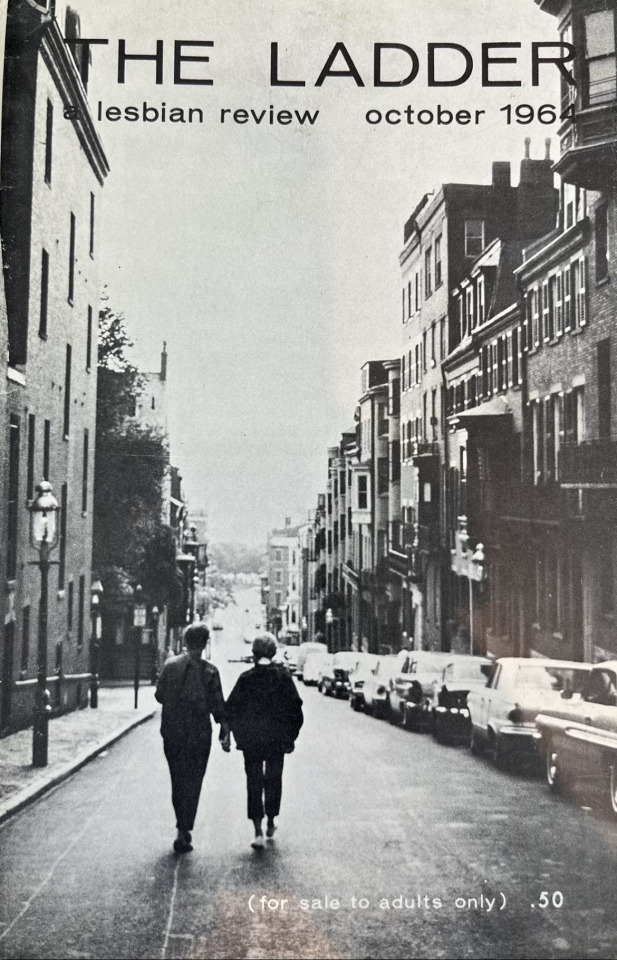
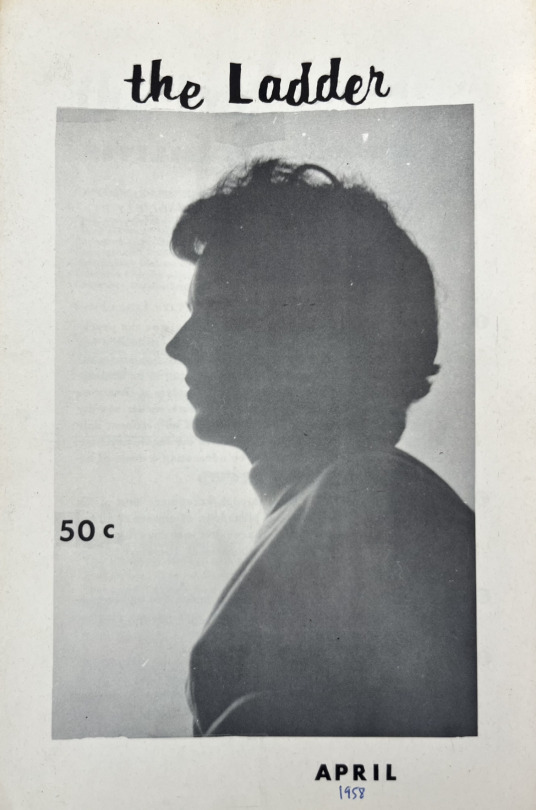


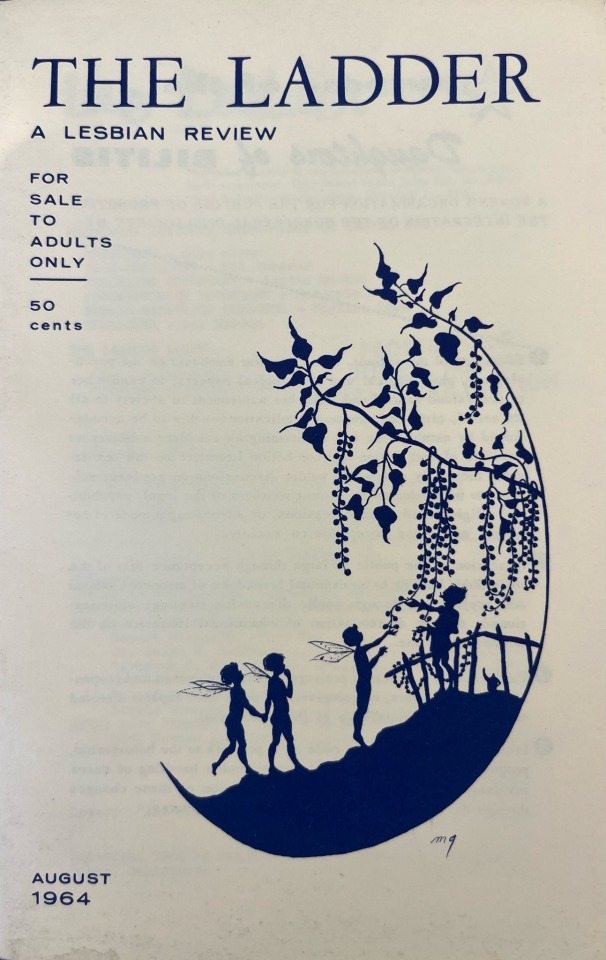
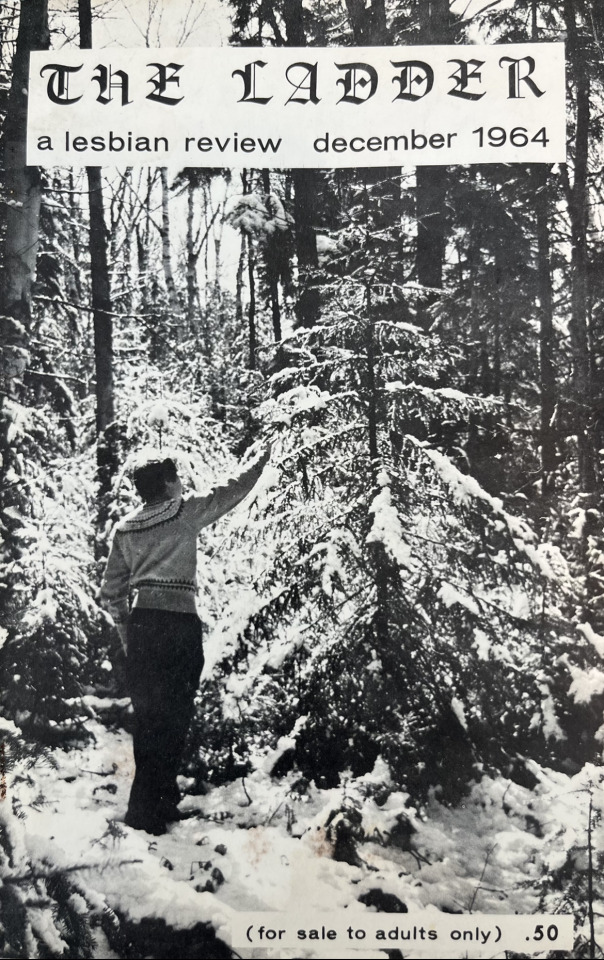

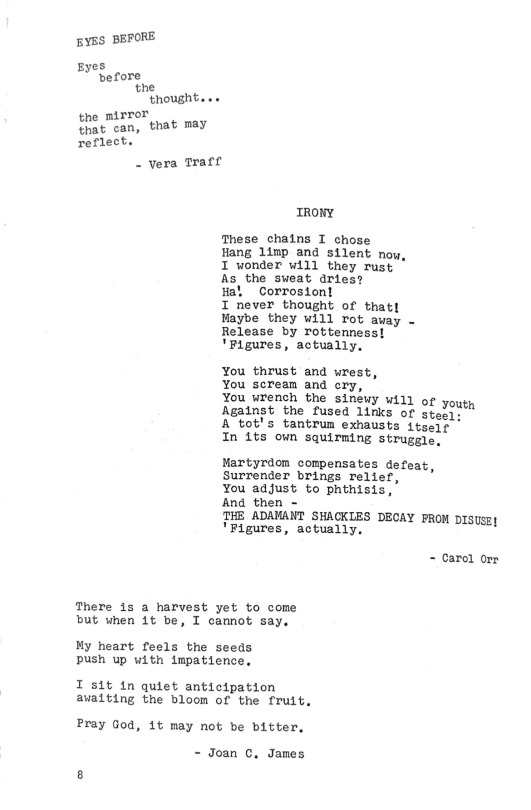
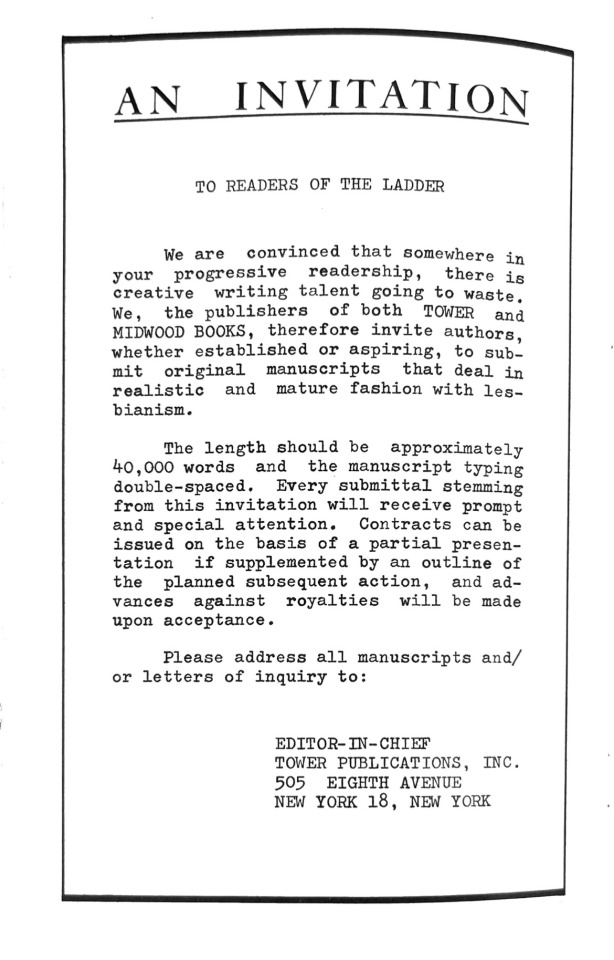
Starting off our new weekly series, Lesbian Magazines Through the Decades, with The Ladder, which is known to be the first Lesbian Magazine. Founded in 1955 In San Francisco, The Daughters of Bilitis formed and became the first Lesbian rights group in the United States. In 1956 they published their first copy of The Ladder. The Ladder worked as a Lesbian social club, a way for Lesbians to connect that was safer than going to gay bars that were frequently raided. The Ladder was a collection of Lesbian life at the time, consisting of short stories, poems, information on local events, and a section for readers to send in their responses. Covers were drawn in the beginning, and over time Lesbians began to come out from the shadows and play themselves on the cover. In a time when it was not safe to be out, The Ladder was a lifeline for Lesbians to be able to create community. A full collection of The Ladder can be found at the June L. Mazer Lesbian Archives.
#lesbian #lesbians #archives #lesbianarchives #lgbtq #wlw #westhollywood #junemazer #queer #women #community #pride #pridemonth #lesbianpride #gaypride #gay #lgbtqhistory #socialmedia #theladder #magazine #periodicals #daughtersofbilitis #dob #sanfransico #community #shortstories #poems #collection
6 notes
·
View notes
Photo
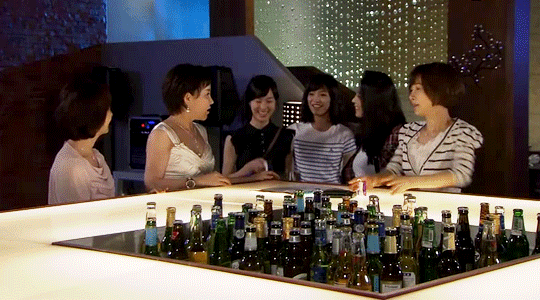
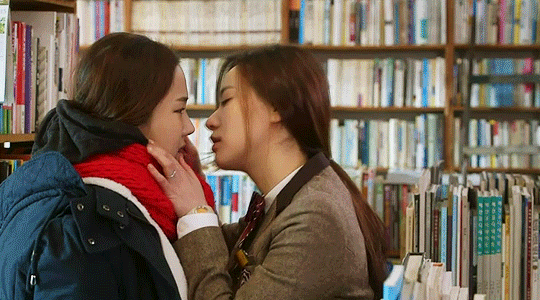
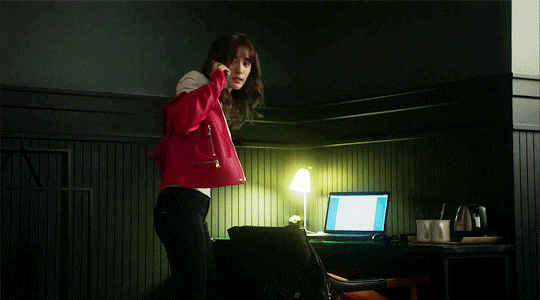
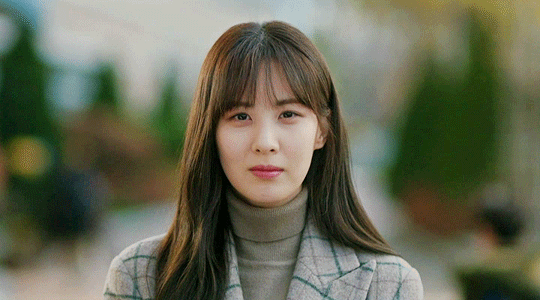
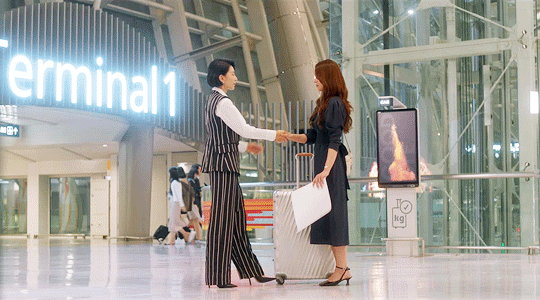

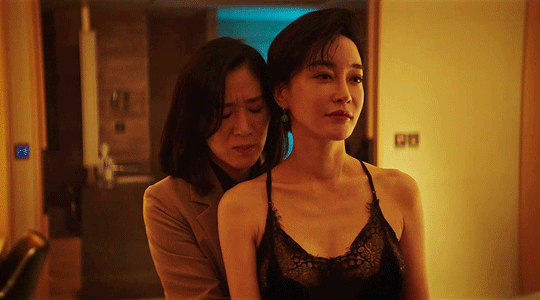
South Korean TV Drama - Canon wlw
KBS Drama Special: Daughters of Club Bilitis (KBS) - 2011
Seonam Girls High School Investigators (JTBC) - 2015
The Good Wife (tvN) - 2016
Hello, Dracula (JTBC) - 2020
Mine (tvN) - 2021
Nevertheless (JTBC) - 2021
The Road: The Tragedy of One (tvN) - 2021
#kdramaedit#wlwedit#femslash related stuff#daughters of club bilitis#seonam girls high school investigators#tvn the good wife#hello dracula#tvn mine#jtbc nevertheless#tvn the road#like this isn't exhaustive but I'm sure I'm not missing a TON#the gaps at the start but now coming in a rush :>#jtbc and tvn really fighting it out for best huh#tvn has two in 2021 but gets points taken for the road--the most recent--being like that#but I suppose we should get messy trainwreck rep like everyone else per the genre?#but mine and nevertheless really went out of their way to make theirs especially lovely#jtbc probably winning on account of it having the only kiss#and looks like soljiwan was super popular!
986 notes
·
View notes
Text
Gay Characters in Kdramas: The Good, The Bad, and The Mediocre
Gay characters rarely show up in Korean dramas. Though there have been a few characters over the years, In terms of representation, the characterization and stories of these characters are usually nothing to write home about, but I figured, why not write about it anyway? Here’s my watch and don’t watch list, if you’re looking for gay characters in kdramas.
Warning for spoilers galore!
The Mediocre (these aren’t bad, but they’re not the best either)
Lily Fever (2015)

The Story: Kyung Ju heads to her friends house one day to find her missing passport. She finds Se Rang instead.
Should You Watch?: Sure. This show is quirky and just downright odd. The ending leaves a lot to be desired and the story itself is kind of all over the place, but it’s cute, it’s funny, it’s short, most of it’s nonsense, and the girls have lots of chemistry. It’s only a bonus that Se Rang is a standout character of this show. You’ll probably fall for her yourself by the end of the webseries.
The Lover: Joon Jae and Takuya (2015)
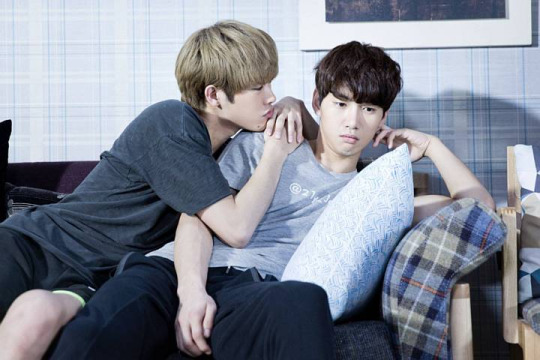
The Story: Different couples live together in an apartment building. The show shows us snippets of their lives. Joon Jae’s life gets turned upside down when he meets his new roommate Takuya.
Should You Watch?: Hmmm...yeah. I started watching this show expecting it would showcase the typical Korean bromance between the guys. The kind where the show makes it seem like the guys might have feelings for each other, but the show just skirts around the topic entirely. In the first few episodes, that’s exactly what happened between Joon Jae and Takuya (with a lot of sex jokes and penis jokes thrown in for good measure. That’s actually what most of the show is). But the show eventually, actually, went there. Joon Jae and Takuya don’t get a whole lot of screen time, but when they do, we get to see some serious feelings thrown in with all the crass humor, and Joon Jae and Takuya do admit to having feelings for one another. The ending could have been a little better, but it was a happy one, so baby steps.
Perseverance Goo Hae Ra: Jang Goon (2015)

The Story: A group of rag tags come together to form a band. Jang Goon joins the band and meets their manager Tae Poong who he’s had a crush on for years.
Should You Watch?: Only if you’re interested in the rest of the show. Jang Goon has a fairly interesting storyline. He has a friend who accepts him after finding out about his crush and he has to rebuild bridges with his father who doesn’t accept him doing music (and Jang Goon’s scared he wont accept his being gay either). But Jang Goon’s storyline is such a small part of the story it wouldn’t be worth it to skip through to only his parts.
Daughters of Club Bilitis (2011)

The Story: A one episode drama detailing the lives of four lesbian couples.
Should You Watch?: I watched this so long ago, I honestly don’t remember a single shred of what happened in it, but I’ll say yes, watch it. Because there are so few lesbians in asian dramas you have to watch the one’s that exist. The entire show is about lesbians, so I mean, why not?
Reply 1997: Jun Hee (2012)

The Story: The lives of a group of high school students in the year1997. Jun Hee has a crush on his friend Yoon Jae.
Should You Watch?: Yes and no. The Reply Series (Reply 97/94/88) are pretty good dramas after all. They’re great for nostalgia, family, friendship, and the like, but if you’re here solely for the gay? Probably not worth the time. Jun Hee’s a side character. We see him crushing on Yoon Jae and he confesses his feelings to Yoon Jae and another friend, but there’s not too much more than that.
Seonam girls high school investigators: Eps 11-12 (2014)

The Story: High School girls investigate and solve problems in their school. The show is episodic and in these two episodes the girls attempt to help Su Yeon and Eun Bin who have to hide their relationship from their classmates.
Should You Watch?: Yes. I honestly don’t remember much about this one either, but I do remember it being decently done. This show caused a lot of controversy years ago when it aired Korea’s first lesbian kiss ( probably korea’s first same sex kiss period that was a legitimate kiss and not used for laughs). It’s worth checking out to see what caused all the ridiculous uproar.
Wise Prison Life/Prison Playbook: Han Yang (2017)

The Story: Big time baseball player Kim Je Hyuk turns into a crimanal overnight. After he’s convicted, he has to face his new life in prison. He meets some interesting people in prison. Among them is the drug addict Han Yang.
Should You Watch?: Yes, because the story itself is a really interesting take about a man who goes to prison, meets a lot of different, people, and ultimately makes new friends/family. If you’re just watching for the gay? I’d still have to say yes, despite the fact that Han Yang doesn’t get the happy ending he deserved. Han Yang was one of my favorite characters in this show. I don’t know how he managed it, but I swear Han Yang got funnier as the episodes passed. I was really endeared towards him attempting to kick his drug habit while also trying to salvage his relationship with his ex-boyfriend Ji Won. He had such an interesting story arc, was such an entertaining character, and I didn’t feel like the show ever made fun of him for being gay. This character was just such a joy to watch, I definitely don’t regret watching, even though I wanted more.
Moment at Eighteen: Jung Oh Je (2019)
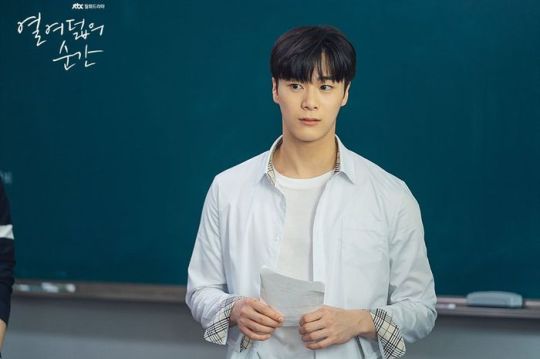
The Story: Transfer student Jun Woo has no interest in school life, as he is traumatized from being expelled from bullying. Meanwhile, Soo Bin has been watching Jun Woo all this time. She sees a different side to Jun Woo than the one that other people see. Oh Je, is Jun Woo’s best friend who starts to discover his sexuality.
Should you watch?: Hmmm… sure. Oh Je has a decent side plot. It was interesting to see him figuring out he liked Hwi Young and coming out to his ex girlfriend and his friends. I do wish his story was expanded a little more though. There were several things I would have liked to have seen, like coming out to his family, and I thought they wrapped his story up a little too quickly at the end.
Love with Flaws: Won Suk and Ho Dol (2019)
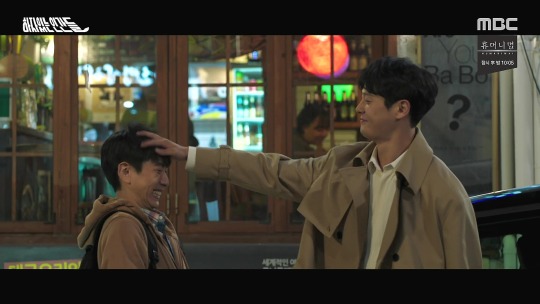
The Story: Joo Seo Yeon, is a hot-tempered physical education high school teacher who always wears sneakers, jeans and training uniforms. The death of her parents helped instill a deep sense of compassion, a generous heart and an outspoken objection for anyone who drinks and drives. Living in a house with three wild and very attractive brothers, she loathes flower boys. Her ideal type is someone who is “not handsome.” Won Suk is one of her handsome older brothers.
Won Suk has closed his heart to relationships and love, but he lives his life as an openly gay man. Ho Dol is closeted and lacks confidence. They meet one night at Won Suk’s bar.
Should you watch?: People have been kind enough to condense Won Suk’s and Ho Dol’s story into parts on YouTube so yeah, go ahead and check it out.
These two don’t get a whole lot of screen time, but the little they do get is nice. We get to see Won Seok help Ho Dol open up and be more confident with who he is and in turn, Won Seok opens up his heart.
The Bad (you probably shouldn’t waste your time on these ones)
Personal Taste: Director Choi (2010)

The Story: This dramas about a straight guy who pretends to be gay in order to gain access to the blueprints of a woman’s house…or something like that. Director Choi’s specific story revolves around his attempts at courting that guy.
Should You Watch?: Absolutely not. Half of the time the drama equates being a gay man to automatically being feminine, a woman, or not a “real man”. Director Choi is also a good deal older than the male lead and makes several attempts at courting him even though he’s not interested. It kind of came off as the “creepy old gay perv” and that didn’t sit well with me. I suppose you could skim through the drama to watch Director Choi’s scenes. If sad gay men Is your thing. I just felt bad for the guy most of the time.
Ho Gu’s Love: Kang Chul (2015)
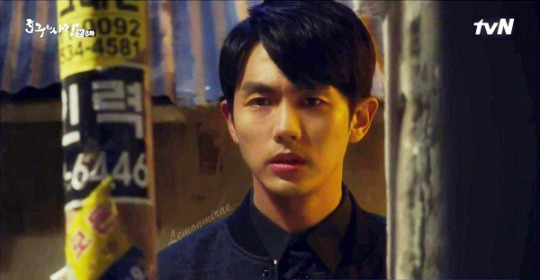
The Story: Ho Gu’s a pushover, a fool, and kind of an idiot. He meets his old classmates and things get a complicated. One day in High School Kang Chul meets Ho Gu’s twin sister and mistakes her for Ho Gu. They spend the day together and she kisses him. The kiss sparks feelings in Kang Chul. Of course Kang Chul thinks it was Ho Gu who kissed him and years later, when he meets Ho Gu his feelings grow stronger.
Should You Watch?: Yes? Maybe? If you really want to, but mostly…no. With this, I expected that the typical drama set up would happen. Similar to all gender benders, Kang Chul would find out that it wasn’t Ho Gu he kissed. So any feelings he was having for him would immediately get swept under the rug where we could all pretend we never knew his heart fluttered for another man. Imagine my surprise when episode after episode passed and that didn’t happen. We got down to the last few episodes and Kang Chul had admitted to himself that he liked Ho Gu, he came out to his parents, and his coworkers assumed he was gay. The show was actually depicting the struggles of being gay in Korea and it was arguably one of the better storylines for a gay character on Korean t.v., but then the show couldn’t stay strong and they flipped the script. Predictably, Kang Chul finds out it was Ho Gu’s sister he kissed, the show copped out, and lo and behold Kang Chul was straight with no further mentions of any other possible sexuality. Watch it if you’re curious, but be prepared to be extremely disappointed by the end.
Graceful Family: Mo Wan Joon (2019)
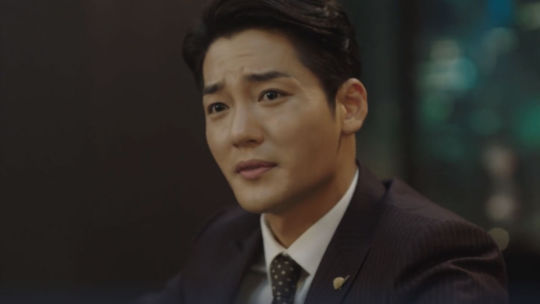
The Story: Blah blah blah, revenge or something- at a point it’s revealed that Mo Wan Joon is a trans woman.
Should you watch?: If you really like revenge melos maybe, but if you’re looking for this show to do something good and offer up some good trans rep? Nope.
Literally nothing about Mo Wan Joon’s story is watchable. I wasn’t even entirely sure the show even knows what being transgender even means. It comes off as more of a plot twist to put the family all in a tizzy more than anything else. They don’t really show much of Wan Joon’s struggle or anything poignant or engaging.
Sweet Munchies: Tae Wan (2020)

The Story: Jin Sung pretends to be a gay chef to film a tv show for money. Tae Hwan, a closeted fashion designer falls for him.
Should you watch?: No. "Everyone loved Personal Taste right? What if we just did that again but with a chef this time?" This could have been potentially groundbreaking, but by the end of the show the two leads are unlikable and we just wind up with more sad gay tears. But Lee Hak Joo as Tae Wan? *Chef's kiss*. This man put me through the wringer and he does it so subtly. If you must watch, literally skim through Tae Wan’s parts.
The Good (these are worth the hours of your life you wont get back)
Painter of the Wind (2008)

The Story: Shin Yoon Bok is a talented painter who disguises herself as a boy to search for her father's murderer and meets a master painter who guides her into being a great painter. Kim Hong Do is the man who teaches Yoon Bok how to paint, and they develop a strong friendship of mentor and disciple.
Should You Watch?: Yes. On the surface this sounds pretty straight, but ignore the summary, because yes there’s a loveline between Yoon Bok and her mentor, but the most interesting story here is the loveline between Yoon Bok and a Gisaeng she meets named Jeong Hyang I’ve seen plenty of gender benders, but I’ve never seen one where a woman falls in love with the girl who’s pretending to be a boy. This drama isn’t technically supposed to be gay, but it’s extremely gay when when bisexual Yoon Bok hits on the gisaeng the first time they meet. Yoon Bok finds herself falling in love with the Jeong Hyang too and the love between them comes off as extremely genuine and sincere. I don’t care what that show was trying to tell me, Yoon Bok/Jeong Hyang was the true otp.
Life is Beautiful: Tae Sub and Kyung Soo (2010)
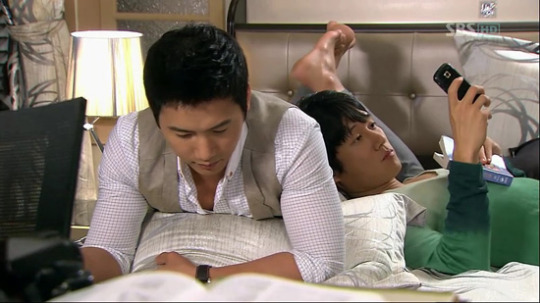
The Story: A family drama about a blended family. The show focuses heavily on Tae Sub and his boyfriend Kyung Soo
Should You Watch?: Absolutely. In this drama we actually get to see a same sex couple. There’s not just one gay character or a situation where you have to read between the lines. Tae Sub and Kyung Soo are a gay couple who get to be together and happy and they get screentime! The show focuses on Tae Sub coming out to his family, his family's acceptance/non-acceptance, and Kyungsoo’s family’s non-acceptance as well. We get to see the guys work through their problems together and we get to see how they’re relationship changes and grows. My only complaint about this show is that it aired seven years ago and korea has shown little to no progress in terms of lgbt characters and couples in kdramas since.
Rural Outcasts (2019)
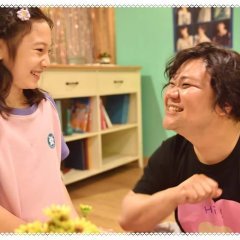
The Story: Sun Hui moves to a small village where she lives her life as Soon Ho until she can make enough money to become her true self. Dong Ja, a feisty 12 year old, breaks into her house one day.
Should you watch? Yes, although, heads up, there’s a cis man playing a trans woman. Found family always makes for a heartwarming story and this one is no different. I loved the bond between Dong Ja and Sun Hui and I loved their mother daughter relationship. Very sweet and heartwarming, but be prepared for some heartbreak too.
#gay characters in kdramas#korean#drama#life is beautiful#painter of the wind#ho gus love#personal taste#perseverance goo hae ra#daughters of club bilitis#seonam girls high school investigators#reply 1997#the lover#lily fever#lgbt#wise prison life#prison playbook#love with flaws#moment at 18
2K notes
·
View notes
Note
hope this isn't annoying but you seem to know alot about korean cinema and i just wondered if you knew of any korean lesbian/wlw films? i've seen the handmaiden but when i search lgbt i mostly get boy stuff
sadly the korean lesbian/wlw landscape is not great and also i haven’t seen much but:
Daughters of club bilitis (2011) - a “tv special” about 3 generations of lesbians. was aired only once and the banned forever.
moonlit winter (2019) - everyone’s favourite milf kim hee ae as a wlw? beautiful film about a mother and a daughter.
a girl at my door (2014) - bae doona as a lesbian detective who decides to rescue a young girl
fantasy of the girls (2016) - an all girl’s school decide to stage romeo and juliet
two weddings and a funeral (2012) - a gay man and a lesbian enter a lavender marriage
our love story (2016) - what it says on the tin. follows the love story of two women.
not a film BUT: lily fever - an amazingly cute and quirky pilot episode that never got picked up and exists on youtube cut up into 9 parts. one of my fav pieces of lesbian media.
23 notes
·
View notes
Text
Political Histories *gay edition*: The Dawn of Assembly
Full steam ahead! Let’s move into the general 1900s, especially the era before the massive human rights movements of the 60s. All over America, queer spaces were popping up out of the dust. Café Lafitte in New Orleans is regarded as one of the oldest still operating gay bars in the US, originally founded in 1933. Mona’s 440 Club in San Francisco was the first lesbian bar which was originally opened in 1936. The first leather bars, drag shows, and underground party spots were finally starting to arrive. With this newfound community, people started speaking and more importantly people started gathering. Emma Goldman advocated for gay rights as early as 1910, and paved the way for a man named Robert Duncan. He was a queer poet in 1944 that was out to the public. Duncan also wrote for an anarchist magazine known as Politics, speaking openly about the oppression of queer individuals. Also during this time, the first organizations devoted to gay right were established. Some were pressured out of it by political and police interference, such as the Society for Human Rights. But some also lasted for decades and played large roles in the gay liberation movement down the line. COC is the oldest surviving LGBT+ organizations in the world being originally founded in 1946 in the Netherlands while The Daughters of Bilitis (DOB) was a long lasting lesbian organization here in the US. All of this, all of these people and places, it was all to pave the way for an inclusive future. Although its nice to make organizations and speak out, sometimes justice calls for fighting. In 1959, the first ever queer uprising took place at Cooper’s Doughnuts in Los Angeles.
#gay history#lgbt history#lgbtq history#american history#queer history#history#politics#us politics#gay rights#pride#pride month#lgbt rights#lgtbtq#lgbt pride#lgbt#queer pride#queer representation
6 notes
·
View notes
Text

Dorothy Louise Taliaferro "Del" Martin (May 5, 1921 – August 27, 2008) and Phyllis Ann Lyon (born November 10, 1924) were an American lesbian couple known as feminist and gay-rights activists.
They founded the Daughters of Bilitis (DOB) in San Francisco in 1955, which became the first social and political organization for lesbians in the United States. They both acted as president and editor of The Ladder until 1963, and remained involved in the DOB until joining the National Organization for Women (NOW) as the first lesbian couple to do so.
Both women worked to form the Council on Religion and the Homosexual (CRH) in northern California to persuade ministers to accept homosexuals into churches, and used their influence to decriminalize homosexuality in the late 1960s and early 1970s. They became politically active in San Francisco's first gay political organization, the Alice B. Toklas Democratic Club, which influenced then-mayor Dianne Feinstein to sponsor a citywide bill to outlaw employment discrimination for gays and lesbians. Both served in the White House Conference on Aging in 1995.
They were married on February 12, 2004, in the first same-sex wedding to take place in San Francisco after Mayor Gavin Newsom ordered the city clerk to begin providing marriage licenses to same-sex couples, but that marriage was voided by the California Supreme Court on August 12, 2004. They married again on June 16, 2008, in the first same-sex wedding to take place in San Francisco after the California Supreme Court's decision in In re Marriage Cases legalized same-sex marriage in California. In August 2008 Martin died from complications of an arm bone fracture in San Francisco.-Wikipedia (artwork by @helloworld-itseli )
#PhyllisLyon#DelMartin#pride people#peopleofpride#people#lgbtpride#lgbtq community#lgbt pride#lgbtq#lgbt history#lgbt#lgbt representation#lgbt people
10 notes
·
View notes
Text
ANON: “ do you happen to know any k dramas with LGBT characters? thanks in advance :* “
hello~ there aren’t too many out there (which we will hopefully see change as time goes on) but here are some of the ones I know of. I'm going to include movies too, just in case. I won’t be including any of the genderbending/queerbaiting ones.
Shows w/ LGBT Characters....
- The Lover ; takuya + jun jae (gay couple)
- Reply 1997 ; kang junhee (gay)
- Secret Garden ; han taesun (gay)
- Futureless Things (movie) ; ki chum + hyun soo (gay couple)
- Prison Playbook ; han yang (gay)
- Life is Beautiful ; tae sub + kyung soo (gay couple)
- Seonam Girls High School Investigators ; soo yeon + jun bin (lesbian couple)
- In Between Seasons (movie) ; yong joon + soo hyun (gay couple)
- Perseverance Goo Hae Ra ; jang goon (gay)
- Antique Bakery (movie) ; gay character
LGBT Shows....
- Long Time No See (mini drama) ; gay couple
- Method (movie) ; gay couple
- Just Friends? (short film) ; gay couple
- The Handmaiden (movie) ; lesbian couple
- Some More (short film) ; gay couple
- Boss in Love (short) ; lesbian couple
- Lily Fever (short) ; lesbian couple
- Marry Me (movie) ; lesbian couple
- Daughters of Club Bilitis (movie/1ep drama) ; lesbian couples
- Man on High Heels (movie) ; trans character
that’s all I have for now, it’s definitely not everything but I hope it’s a starting place for you.
13 notes
·
View notes
Text
Remembering the Lesbians in Lesbian/Gay Liberation
Remembering the Lesbians in Lesbian/Gay Liberation
By Ann Menasche
Under patriarchy, lesbians are not supposed to exist. Women - "normal" women at least - are supposed to need men to be complete, for love, for sex, for economic survival, for family, for legitimacy. In such a world, there is no place for lesbians; if a few manage to exist, they are seen as freaks or pariahs. Not surprising that we rarely appear in history or when we are named at all, we are portrayed as lonely spinsters pining after some man. (Remember the lies told about 19th century poet Emily Dickenson, who had a lifelong passionate relationship with her sister-in-law.)
In the mid-to-late 20th century, ideas of traditional womanhood began to be challenged as women as a sex gained increased independence. By the height of the Second Wave of feminism in the late 60s and 70s, lesbians had begun to emerge from the shadows and establish themselves among the leadership of the newly emerged Feminist and Lesbian and Gay Liberation Movements. And as the synergy of Lesbian/Gay Liberation and Radical Feminism freed more women to be able to pursue a lesbian life, a vibrant culture of Lesbian Feminism emerged. That culture produced socially conscious music, poetry, books, publishing houses, newspapers, feminist theatre, coffee houses, and festivals run by and for women that inspired and sustained us and helped fuel the political activism of the time. And in this environment we began to rediscover the lesbians that came before us. We no longer felt so alone.
But times have changed again and lesbians are being rendered invisible once more. Even the contributions lesbians made to the Movement for Lesbian and Gay Liberation are being forgotten. Many factors have contributed to this disappearing of lesbians from history, from our public consciousness, and often from ourselves and each other. While lesbians have won some mainstream acceptance through marriage equality, the accumulated losses have begun to be greater than the gains. Hard economic times, a conservative political climate, the growth and increased power of the Christian fundamentalist Right and a growing backlash against feminism have conspired to make lesbian existence harder once more. Independent lesbian culture has been destroyed. Even the lesbian bars that, despite their flaws, provided a place to meet and find community with other lesbians are now gone. In their place is a sense of utter isolation and despair among many lesbians. And there is often no place to turn for support except perhaps online forums.
Moreover, though the illusion that we've already won our rights is widespread, the reality is quite different. Lesbians in the United States can still lose their jobs, be disowned by their parents, lose custody of their children, and be raped or murdered for loving other women. Anti-lesbian prejudice is everywhere.
One of the most destructive influences on lesbians, which is erasing us from history and undermining the possibility of lesbian existence in the present, is gender identity ideology. As this ideology has become increasingly predominant, overwhelming our lesbian/gay communities and incorporating itself into law and culture, lesbians have felt ourselves surrounded on all sides. We are being pressured and guilt-tripped on the one hand to accept men calling themselves women into our communities and our bedrooms. At the same time, rebellious young girls with same-sex feelings, and lesbian adults are being convinced in growing numbers they are really "men" and are being coerced or swayed into "transitioning." As women’s liberation no longer appears to be a realistic goal, some of this vulnerability to the forces of transgenderism and extreme body modification may be summed up by the phrase “if you can’t beat them, join them.” How else escape the violent heavy hand of misogyny on our bodies and lives but to pass as male?
Without question, Lesbians have become extremely marginalized within the modern LGBTQ+ "alphabet soup" - the corporatized stepchild of the Lesbian and Gay Liberation Movement. LGBT centers in the name of trans-inclusion, refuse to provide space for lesbians to even meet together outside of the presence of males. We are not welcome at Pride and even the Dyke March has been taken from us by “lesbians” with male genitalia and their supporters. And as lesbians have been virtually disappeared, so has the role we played in the struggles that came before us been disappeared as well.
Our lesbian foremothers are once again gone from the history books, or are posthumously "transitioned," described as "queer," or treated merely as a footnote. But lesbians fueled the Lesbian and Gay Liberation Movement from its start. It would not have happened without us. And it is time to give credit where credit is due.
The Stonewall Rebellion on June 28, 1969 was not led by individuals identifying as transgender. Transgenderism barely existed at that time even as a concept. What existed was large numbers of lesbians and gay men, some of whom cross dressed or dressed in drag, but did not thereby deny either their sex or their homosexuality. Drag queens and butch lesbians were among those who found community at the Stonewall Inn in New York, a bar owned and operated by the mafia but one of the few places that same sex couples could dance together. Police raids were commonplace but that historic night as police dragged patrons out of the bar and beat them, one butch lesbian, Storme DeLaverie, decided she had had enough. When a police officer shoved her and called her a "faggot", she punched him in the face. Four officers assaulted her and one hit her on the head with a billy club. Bleeding from the head, and dragged toward the police van, she yelled "Why don't you guys do something?" The rebellion was on and lasted six nights. Lesbian and Gay Liberation was born.
Martha Shelley, a lesbian with strong left-wing politics, had passed by the Stonewall on the fateful night but thought she was seeing an anti-war protest. She had no idea that the people throwing rocks at the cops were gay. When she realized what she had missed, she contacted the Daughters of Bilitis and the Mattichine Society and made a proposal for them to jointly sponsor a protest march. On July 27, 1969, 200 lesbians and gays marched in Greenwich Village, in what was to become the world’s first Gay Pride Parade. The organizing committee formed itself into the Gay Liberation Front, a revolutionary group that demanded not assimilation but a complete overhaul of the patriarchal, racist, imperialist system. A new movement was launched, initiated by a lesbian.
Almost a decade later in 1978 in San Francisco another lesbian was the central leader in the successful movement to defend Lesbian and Gay Rights then under attack. This was the struggle against the attempt by Christian fundamentalists to pass the Briggs Initiative, a proposition that would have banned gay teachers and all supporters of Lesbian/Gay Rights in the schools. Though everyone knows about Harvey Milk, many giving him credit for the defeat of the Briggs Initiative, it was actually Nancy Elnor, a lesbian-feminist and socialist, someone virtually no one has heard of, who was far more responsible for that victory. I knew Nancy personally and worked together with her in the Bay Area Coalition against the Briggs Initiative. We were on and off again lovers, our personal interaction often stormy, but my admiration for her never waned.
Nancy worked long hours, doing amazing grassroots organizing work always accompanied by her German Shepherd "Bianca" and put together a mass movement that brought out tens of thousands into the streets against Briggs. She brought in organized labor and every progressive organization in San Francisco to join the cause, and chaired packed meetings of activists. The Coalition under her leadership, organized a televised debate between Milk and Sally Gearhart on the one side and Briggs and one of his cohorts on the other. A thousand people watched the debate on a big screen in a local high school auditorium. Nancy's in-the-streets movement building done through distributing thousands of flyers, making hundreds of phone calls, and attending dozens of meetings (there was no Internet) set an example for the whole state, helped change the political climate, and put us on the path to victory. Nancy died young but I'll never forget her.
As many lesbians celebrate Pride with varying degrees of ambivalence or else consciously ignore the festivities as no longer speaking to us, it is important to remember and celebrate the heroic leadership of our lesbian foremothers who changed history. If we did it once, we can do it again.
Read the full article
#BayAreaCoalition#BriggsInitiative#Christianfundamentalists#DaughtersofBilitis#DykeMarch#GayLiberationFront#GayPrideParade#GreenwichVillage#HarveyMilk#Lesbian/GayLiberation#MarthaShelley#MattichineSociety#NancyElnor#radicalfeminism#SallyGearhart#StonewallInn#StonewallRebellion#StormeDeLaverie#transgenderism
15 notes
·
View notes
Text
In honor of National Coming-Out Day, here’s some happy things to remember:
* Ellen DeGeneres divulged her orientation on national television in support of those struggling with their own sexual preferences. 42 million Americans tuned in live to celebrate.
* Ellen Page came out at Time to Thrive saying she was tired of lying by omission. She wanted others to have an easier, more hopeful time, and shined an important light on LGBT youth and mental health. She ended her speech with, ‘I love you’.
* James Edward McGreevey was the first openly gay governor in US history- he concluded his career saying he compromised himself while trying to conform to a normal life. So, he gave up politics to aide in the rehabilitation of former inmates.
* Danica Roem became the first transgender canidate elected to a state legislature, also, at the time, beating out a male canidate who had been elected thirteen times over in twenty six years.
* D.C. allows residents to chose a gender neutral option on their state licenses.
* There are 41 open LGBT participants in the World Olympics.
* Stonewall Inn has been recognized as the first national monument honoring the gay rights movement. It was enacted as so to create the reminder that we have a responsibility and a commitment to equality.
* Author Allen Drury created the first (documented) openly bisexual character in his book ‘Advise and Consent’. It won the Pulitzer Prize for fiction and became a Broadway Play.
* The early twentieth century began the fight for LGBT rights. Starting with: 1924, Henry Gerber and The Society for Human Rights. 1951, Harry Hay and The Mattachine Society. 1955, Del Martin/Phyllis Lyon and Daughters of Bilitis. 1966, San Francisco and the National Transsexual Counseling Unit.
* There are 12 LGBT organizations in the United States officiated with Political Parties working their butts off for equality. (3 are even Republican)
* Desmond Napoles, a 10 year old from Brooklyn, created a club for kids to express themselves in a positive, encouraging, and safe space. He was also the first child Drag Queen in the US.
-
These are markings of positive moments in the US LGBT history. They are not meant to encourage or persuade someone to ‘come-out’. They are just a happy reminder of some of the many good things that have happened in our country. Today is a special day, if you have, or have not, come out- for many reasons. For me, it is a moment to remember all the people fighting for equality. It is a day to appreciate those road pavers and say a silent thanks for all they’ve done.
So, thank you.
I am so grateful.
#lgbt#national coming out day#gay rights#lesbian rights#transgender rights#bisexual rights#pride#blessed#grateful
131 notes
·
View notes
Text
Different Daughters: A History of the Daughters of Bilitis and the Rise of the Lesbian Rights Movement
Marcia M. Gallo, 2006
Nearly fifteen years before the birth of gay liberation, the Daughters of Bilitis (DOB) was the world’s first organization committed to lesbian visibility and empowerment. Like its predominantly gay male counterpart, the Mattachine Society, DOB was launched in response to the oppressive anti-homosexual climate of the McCarthy era, when lesbian and gay people were arrested, fired from jobs, and had their children taken away simply because of their sexual orientation. It was against this political backdrop that a circle of San Francisco lesbians formed a private club where lesbians could meet others in a safe, affirming setting. The small social group evolved over the next two decades into a national organization that counted more than a dozen chapters, and laid the foundation for today’s lesbian rights movement.
Different Daughters chronicles this movement and the women who fought the church and state in order to change not only our nation’s perception of homosexuality but how lesbians see themselves. Marcia Gallo has interviewed dozens of former DOB members, many of whom have never spoken on record. Through its leaders, magazine, and network of local chapters, DOB played a crucial role in creating lesbian identity, visibility, and political strategies in Cold War America. (GR)
Goodreads
OpenLibrary
#lib#ol#marcia m gallo#la#trying the embed thing#feedback welcome#i know it won't work in-dash or on mobile#but the OL link is still there so
7 notes
·
View notes
Note
hi i am crying about secret temptation again and i dont know who else to tell. i want expecting that kind of class from a 1992 kdrama and nothing really has been comparing and i am sad. like the writer of that make more shows 😫
You’re welcome to come talk to me any time. And I feel you, it’s almost unbelievable it’s from 20 years ago already and it was on a public channel too but even today we can’t have anything similar even on cable. Noh Hee-kyung did that.
If you’re looking for something similar, tho not exactly like it in terms of quality but still worth checking out for the subject matter, try looking for Daughters of Bilitis Club (2011). It was on KBS (like Sad Temptation!) but due to controversy it was censored and taken down from all official platforms but if you dig deep enough I’m sure you can find it somewhere.
#joepiitt#reply#and for all the shit jin se yeon gets for her limited acting#at least she had the courage to be in this drama special#we gotta give her credit for it
3 notes
·
View notes
Text
LGBT Community
First and foremost, being gay is not a choice. Just in the same way that heterosexuals like the opposite gender, it is not because they were raised to be straight, it is just the way their brain is programmed. Sexual orientation can be defined, by the LGBT Communication Manual as, “each person’s capacity for profound emotional, affectional and sexual attraction to, and intimate and sexual relations with, individuals or a different sex/gender/ or the same sex/gender or more than one sex/gender” (LGBT Communication Manual). With each person’s preference to sex/gender, there comes a title so that within their community they can distinguish each other and know what each person prefers. For example, they use terms like bisexual, gay, lesbian, heterosexual, pansexual, transgender, intersexual, t-lover, and drag king or queen to name a few.
The LGBT community wasn’t always accepted for who they were, and it took much courage to come out into the nonaccepting time of the 50’s post-war. This is thanks to a man named Harry Hay because he found the first gay rights organization, that he called the Mattachine Society. Its founders, to the surprise of many, were former communists and radicals. Their goal with creating this group was not only to change the way that people looked at gay men and what they stood for but for men to start being comfortable in their skins. In a matter of three years, the Mattachine Society had grown to the point that you could attend a meeting every day for the rest of your life if that is what you desired to do, claimed Dorr Legg. At this point, the Gay community was peaking and not stopping with tens of thousands of people joining in the Los Angeles area. (Roscoe, accessed 20 October 2018).
Not too much after the Mattachine Society was created, the Daughters of Bilitis was formed. A lesbian group based in San Francisco, the founders Del Martin and Phyllis Lyon, were the first same-sex couple to be married after the legalization of same-sex marriage was passed. Initially, this group was created so that lesbians could meet other lesbians so that they could start socializing and dancing at the clubs together. Eventually, this secret club at the time had realized that many laws were “anti-gay” and instead of partying and having a good time, they needed to start making a change in society for the well being of their futures. Soon after this realization, they began to focus more on educating the public about lesbians, they started to participate in research about lesbians and started to repealing anti-LGBT laws. (Anti-Defamation League, 2011)
Coming out in the 1950s was a very bold act considering that the United States government targeted the LGBT members because politicians strongly and wrongly believed that homosexuals were infiltrating the U.S. poses a threat to national security. The leaders of the U.S. in this time believed that those who were declaring themselves as homosexuals were both weak and mentally ill, and this posed a threat because the U.S. was sure that anyone in these conditions would reveal state secrets to undercover spies if they were blackmailed. Because of the government creating this illusion to citizens, the “Lavender Scare” was created. A time where LGBT members were fired on a daily bases and were forced to go through police raids at gay bars, parties, and places that weren’t even morally okay… their homes. It was a hard time for those who were coming out in this era because laws started being made that would prohibit wearing the clothes of the opposite gender and dancing with someone of the same sex. As a result of all these laws and unfair judgment, many members of the LGBT community went into hiding. (Anti-Defamation League, 2011)
Coming out can be defined but the LGBT communications manual as “a process of self-acceptance which may take an entire lifetime. A person builds their identity as a lesbian, gay man, bisexual, or transgender person, at first keeping it to themselves. Later they may or may not reveal it to other people” (LGBT Communication Manual). In modern day today, coming out is not as hard as it used to be 60 years ago, but it is still and always will be a big deal. Coming out isn’t just about telling people what sex you are interested in, but about finally getting to show your loved ones whom you are and hoping that there is still a way that they will accept you for who you are. Depending on where these people live is and what goes on in their household depends on if their family and friends would accept them for who they are. For my mother coming out was not an easy thing to do. Her father and mother thought she was utterly disgusting and to this day don’t accept her. When she came out to her brother and sister they were not accepting at first, but in my family, there is one thing that will always be important, and that is you only have one family it can grow, but it will never change. Over time, both of them came to accept her and love her just for who she is. My second mom, Lu, has passed onto another life, but if it wasn’t for her I know that my mom wouldn’t have been strong enough to come out on her own to our family, and for that, I will be forever grateful. For two people my age, I have come to find out they don’t have coming out stories because they always knew and acted on being just who they were, which has to be the most beautiful change I have seen throughout society.
A big factor that has played a role in many people coming out is what religion they are. Almost all religions have an accepting or nonaccepting truth to it considering the LGBT community. The Christian faith does not approve of homosexuality but preaches that we must love and accept everyone. Which is why over time the Christian community has some who support the LGBT community and some who do not. Judaism sees the LGBT community as not natural and does not accept it, although there are Jewish LGBT groups. (LGBT Communication Manual)
Although many people in today's society accept those who are a part of the LGBT community, there are still those times where people who don’t accept these people start to harras these members, which does have its title and definition: Homophobia. This is described as the fear and irrational hatred towards homosexuals. Homophobia can be seen almost anywhere but is slowly dissipating as time goes on. Familiar places we can see this kind of hate is in areas of extreme religion, the workplace, and school.
In Bogota, Colombia nineteen people were interviewed as being a part of the Colombian LGBT community wanting to know their stories and what it is like for them living where they do. For Carmen, a 46-year-old transgender woman, her upbringing into this community was an extremely rough case. Before completing the gender reassignment process, Carmen had finished her military service, and here sadly she was taken advantage of because of rumors going around that she (he at the time) liked other men. Even though he had said no to this sergeant, he started touching her and forcing himself onto her and speaking to her “Lie down, I am going to be good to you.” After this experience, Carmen had started to have consensual relationships with other men in the army. As Carmen did eventually leave the military, she moved around and became successful again (Zea, Reisen, Biachi, 2013). However, moments like these are what people think is okay, to be able to experimental and force another person to try something that they do not want. This is a clear and horrific example of harassment that has happened, there are many other stories like these and to fix this we need to fight against it and bring attention to what is happening.
Furthermore, completing the process of a transgender person is not an easy process. There are multiple steps to getting to where they want to be, starting with the said person needing an official confirmation from a qualified mental health professional that they suffer from “gender dysphoria,” which refers to the distress that comes the wrong fit of expressed gender and one’s assigned gender. Next, they must undergo twelve months of feminizing or masculinizing hormone therapy, administering more testosterone or estrogens into the body to have the body change more into the desired one. Following, those undergoing this process must go through a most important part of their transition, the “real life” experience. Here they must see the importance of coming out to partners, friends, community members, and family here they must also see all the challenges that are going to be up ahead of changing their sex, such as family, educational, vocational, economic, and legal problems that they will be facing every day. The final step in this years-long process is finally the surgery. For male-to-female they must undergo breast augmentation, facial feminization surgery liposuction, gluteal augmentation, reduction of Adam’s apple, hair reconstruction, penis and testicle removal, and creation of neovagina and clitoris. For female-to-male, they undergo removal of breasts, create of a male chest, liposuction, voice surgery, removal of the uterus, fallopian tubes, ovaries, vagina, and the construction of a penis and scrotum, and finally the implantation of erection and testicular prosthesis. (Bracanovic, 2017)
As you can see it is not easy to get to the end for the transgender community, and once it is all done, things can get harder. For the LGBT faculty in S&E fields, they claimed they felt that “gayness” was invisible and that everyone was just assumed to be hetero. This is assumed because in the Science and Engineering community it is all that what should matter seeing that everyone would fit the “norm” of being hetero. However, this has caused problems for those who have come out in this community, some peers even coming to the point of saying “I think she’s lesbian; I’d never trust her date.” This is a precise moment of work hostility. Those who are part of the LGBT and S&E community have been faced with many difficulties of how their peers feel around them. Some even reported that they knew of peers who were even uncomfortable and anxious to be in the same room as them. These conflicts have created many consequences for them in and outside the work climates. Internally the participants in this research reported that there is a fearfulness with being a part of the LGBT community because those who are not gay have become rude and not approving of them and their work. This created an environment that pushes members to not come out because of being afraid that their action will not be taken seriously. Externally, participants made it clear that they have not gotten jobs because someone had outed them before them receiving the position. Other participants even claimed that have tried to ruin their research and collaboration with others by outing them. (Bilimoria, 2009)
To continue the discussion of harassment that transgenders must face, it is commonly known among Portland, Oregon that public transportation is not a safe place for them. Public transportation is offered throughout the city, for all and is protected under Title VI of the Civil Rights Act, that prohibits discrimination on race, color, and national origin. What it doesn’t protect yet is the discrimination of the LGBT community. Several participants in the social science literature on gender, public space, and urban mobility, had told of many stories of being not being harassed anymore on these public transportation sites. Even a white transgender man (most unlikely to receive hate because of white privilege) could say that he experienced hostility almost on a daily basis when he was a female. This goes to show that until someone looks more “correct” with societies norms that there will always be a hostility accountable for. (Lubitow, 2017)
Thanks to the Pew Research Center, we can come to see that there has been an 18% increase from the decade before in the acceptance of the gay community. There has also been a 19% increase in acceptance for the lesbian community (Drake,2014). Eventually, this won’t even be a number or a thought that will cross the mind, but how can we help to ensure that the LGBT community is more accepted quicker? A few suggestions would be to speak out against any bullying you could see going on towards an LGBT member, being accepting of those around you who come out to you, and most importantly be nice. Being a part of the LGBT community is not an easy thing but with the help of everyone we can change the way people view them and accept them.
Among those who are apart of the LGBT community, there are many ways that they are able to communicate with each other in today's modern age. Like most communities, the LGBT community has a strong online form of communication. By online communication, they communicate when events are, have hotlines, and so they can express who they are. They also have holidays that mean the utmost to many members of the LGBT community. Such as LGBTQ Pride (June), International Drag Day (July 16th), National Coming Out Day (October 11th), etc. Another form of communication that can be seen throughout the LGBT community is the LGBT rainbow flag. For the LGBT community, this is an unspoken form of communication that stands for being apart of this community. Usually, those who are apart of the community have found some type of way to incorporate the flag into a part of their social media or what they wear on a daily basis.
Although with all the hate and unnecessary hostility there are great and wondrous things that come with being a part of the LGBT community. This is also known as, PRIDE! The LGBT Pride march is a celebration of the LGBT community as a whole. If you don’t know what pride is, it is a giant festival where people from all over come an celebrate what it is to be a part of the community. Coming to these events, you can expect a gay version of the Macy’s day parade. There will be people dressed in fantastic costumes, dancing, singing, rejoicing, and have a phenomenal time. The point of gathering in these festivities is different for everyone, but it can be a place where the LGBT community can stand up to the political troubles they are going through as a whole. What is most important to understand when attending one of these events is that everyone will be accepted no matter what because it is supposed to place respect and mutual understanding. As well with visiting one of these events, it is critical to know that there will always be those who are going to protest but they are not the point. What is most important to understand and take away is that no matter what your choice is and what you decide to do with it you can love anyone you would like to because LOVE IS LOVE
3 notes
·
View notes